There are 41 companion plants for bush beans in this list, including a variety of crop plants, vegetables, brassicas, and more.
This detailed guide into companion plants for bush beans is going to help you to use up that extra space in your garden you didn’t know what to do with. Typically, bush beans are popular companion plants for a wide range of vegetables, herbs, flowers, and other plants.
They are particularly favored for their soil fixing ability. This, in turn, helps to boost nitrogen levels in the soil and provides much-needed nutrients to surrounding plants. However, pairing these beans with other plants can also do good for them, including pest control and providing shade.
The best part of pairing bush beans with their companion plants is you have a variety of ways to do so you can use them to fill up rows between taller plants or create an elegant raised bed garden and pair them with herbs.
Either way, bush beans pair well with a long list of plants. It’s simply up to you to decide which ones you want. To help you decide, check out these 41 excellent gardener-recommended companion plants for bush beans.
Table of Contents
What Are The Best Companion Plants for Bush Beans?
Forming part of the three Native American sisters, corn and squash are the best companion plants for bush beans. The three native sisters is a term coined by old Native Americans and was an old age practice that paired beans, corn, and squash in raised mounds to promote healthy growth.
This practice is still used by many gardeners today. As examples of the three native sisters, beans, corn, and squash are planted together as each benefits great growing next to the other. First, both plants share similar growing conditions, although they don’t compete for resources.
Like beans, corn, and squash survive well under direct sun and well drained soil. Squash varieties are primarily vining ones, including winter squash, pumpkin, spaghetti squash, or butternut. Other old Native American companion planting practices involved pairing beans, peas, corn radish, pumpkins, marigolds, and nasturtiums as “good neighbors”.
However, these are not the only plants to complement bush beans well. There are varieties of other interesting plants you can pair with the crop plants.
41 Compatible Plants to Pair with Bush Beans
Bush beans (dwarf) are one of the two major groups of beans (others are pole beans or climbing beans). Instead of climbing like their counterparts, bush beans usually grow as compact and bushy plants to about 2 to 3 feet tall.
Their upright bushy growth means they don’t require any support and take a shorter period to produce beans than pole beans. However, unlike pole beans, bush beans produce fewer beans and require extra attention due to their higher susceptibility to diseases.
These beans thrive well in full sun and well drained soils (enriched before planting) with a pH of 6.0 to 6.8. Ideally, you also want clay or silt loams instead of sandy soil to enjoy a higher yield. However, extremely high temperatures, too much sun exposure, and extreme soil conditions (too wet or dry) may have adverse effects on bush beans.
So, for a companion plant to thrive, it needs to survive in similar conditions. Here are the best plants to consider;
Crop Plants
1. Corn & Sweet Corn
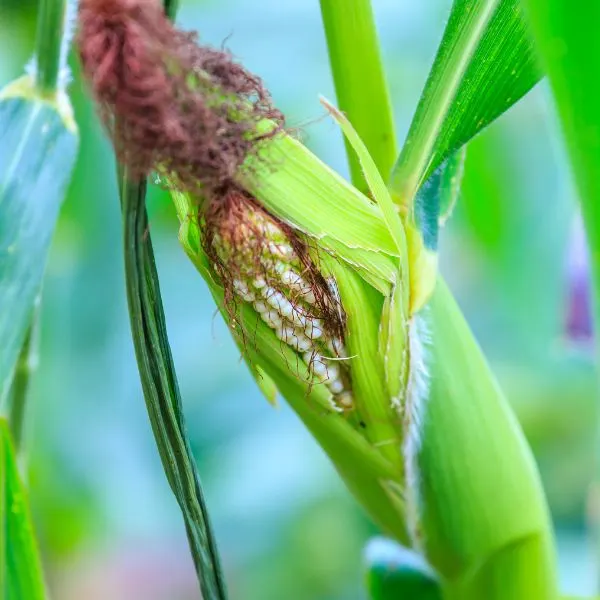
While bush beans require full sun, they are still tolerant of the light shade provided by the taller corn. Further, the shorter bean roots occupy a different soil layer, meaning the two crops don’t compete for nutrients. In fact, the soil fixing abilities of the beans provide enriched soil for the corn to enjoy.
2. Winter Squash
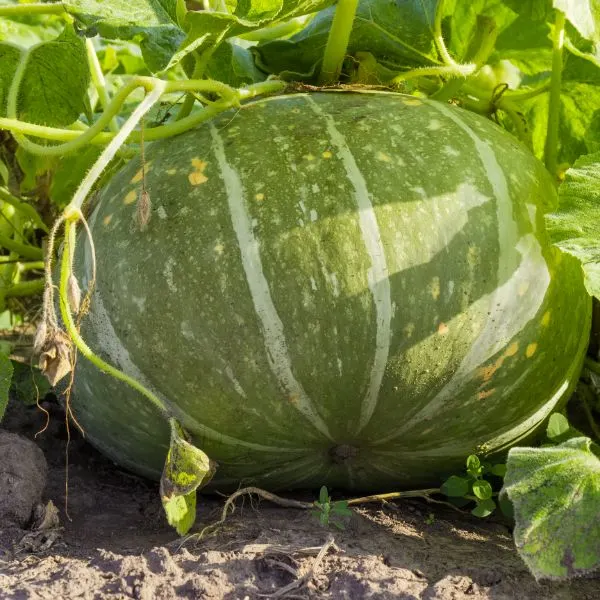
Bush beans grow perfectly with squash, particularly vining squash. Winter squash is a prime example. When paired with squash, bush beans enjoy root protection from the ground level shade offered by the former. The shade provided by the large squash leaves shades the soil, helping to cool the roots while retaining moisture.
3. Butternut

Similarly, butternut benefits from the nitrogen-fixing properties of beans. As a creeper, butternut also produces larger leaves covering a good amount of space on the ground as it continues to creep. This, in turn, provides shaded protection for your bush bean roots and retains the much-needed moisture in the soil.
4. Spaghetti Squash
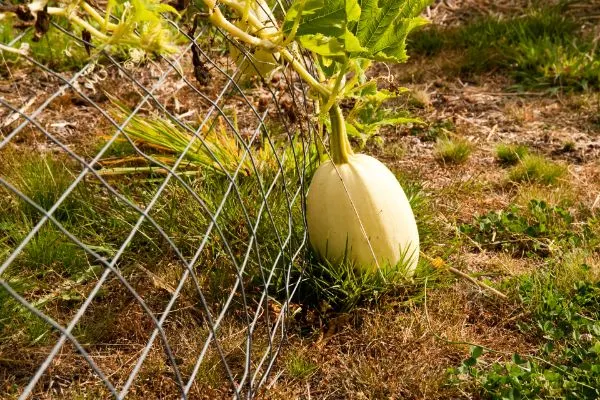
Spaghetti squash boasts similar benefits for bush beans as butternut. It also benefits from the bush beans’ soil fixing. Further, as spaghetti squash’s large leaves provide ground shade, they also block out the sun from nourishing the invasive weeds.
5. Pumpkins
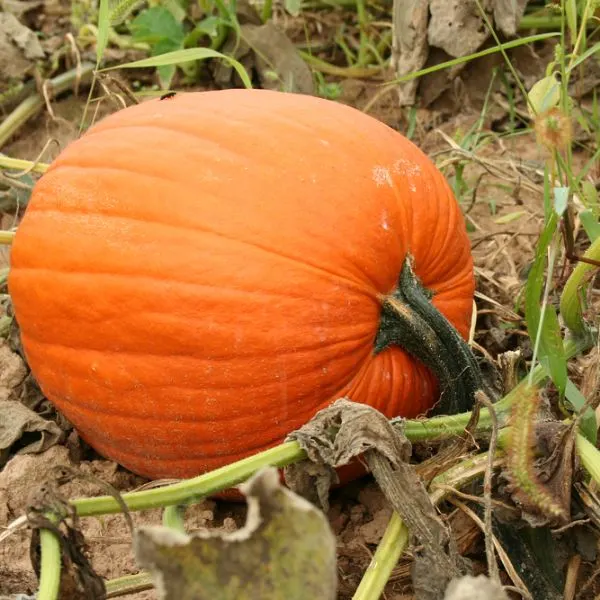
Another popular vining squash example is pumpkins which grow pretty well alongside bush beans. These heavy-feeding crops benefit from the beans’ ability to fix the soil and add nitrogen levels and a variety of other nutrients to the soil. Being vining plants, pumpkins are creepers and establish themselves over time. This means they suppress the growth of weeds which may compete for nutrients with beans.
6. Pole Beans
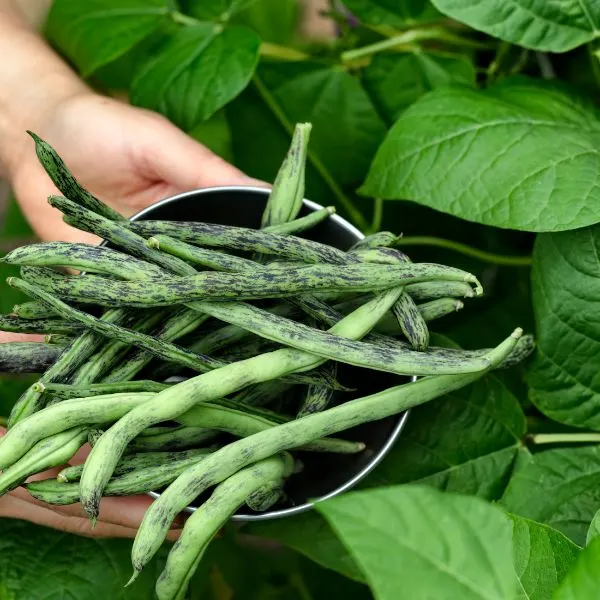
Pole beans and bush beans belong to the same species. However, with their requirements met, they can grow properly side by side. There aren’t any reported proven advantages of pairing the two. But, food-wise, you are guaranteed a hefty supply of two bean types!
7. Peas
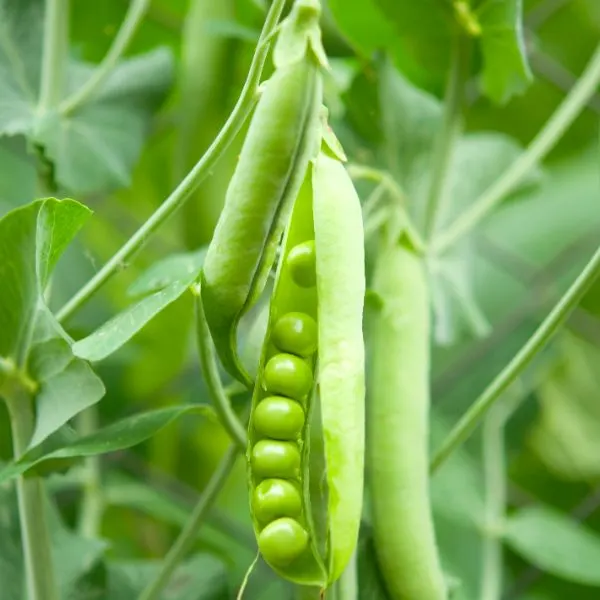
Peas benefit from the ability of pole beans to fix the soil. With a rich supply of nitrogen levels in the soil, your peas can thrive abundantly.
Vegetables
8. Potatoes
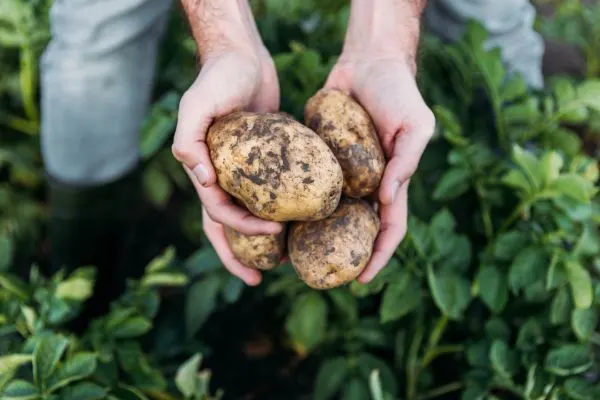
Like most nightshades, potatoes grow pretty well with bush beans. Potatoes help bush beans with pest control, particularly by protecting them from Mexican bean beetles. But, this is a two-way relationship as bush beans also help potatoes with pest control. The crop plants protect potatoes against Colorado potato beetles. While you can grow them in different ways, growing them in alternate rows has been proven to be the most effective.
9. Tomatoes
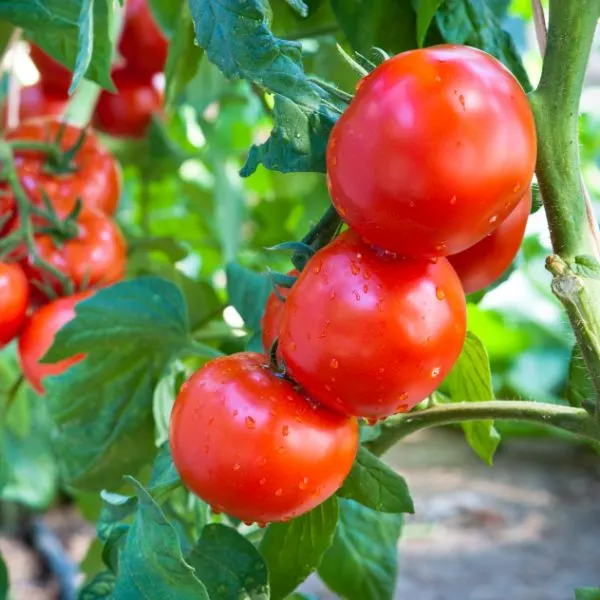
Another popular nightshade plant, tomatoes grow well with bush beans. Like other nightshades, tomatoes contain pest-fighting toxins. However, unlike toxic varieties, such as bittersweet, the toxins in tomatoes are in moderation. This makes them safe for human consumption but lethal to small bush bean-attacking pests.
On the other hand, bush beans also offer several benefits for tomatoes. These crops fix the soil to enrich it with nitrogen which comes in handy for heavy feeders, like tomatoes. Further, the bushy bean plants offer the perfect size to fit in spaces left by tomatoes. Planting them near tomatoes ultimately helps to promote air circulation and protect the plants from fungal diseases.
10. Sweet Potatoes
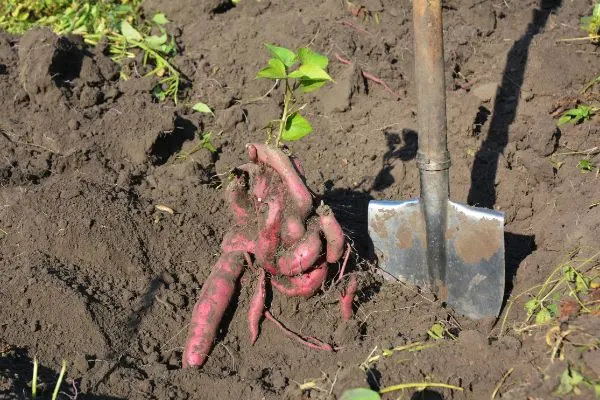
Bush beans and pole beans both grow very well with sweet potatoes. Sweet potatoes are heavy feeders and benefit significantly from the excess nitrogen levels in the soil produced by beans. As they grow and mature, sweet potatoes use up a lot of nutrients to fuel their growth.
So, the nitrogen levels released by beans into the soil help to replace the lost nutrients. Sweet potatoes also benefit bush beans. Since they are creepers, they ultimately outgrow weeds and suppress their growth. This eliminates any nutrient uptake competition for the beans allowing them to grow even better.
11. Beets

Beets grow pretty well and get along with bush beans. Bush beans fix the soil and enrich it with nitrogen and nutrients that favor the growth of beets. Interestingly, however, they don’t get along with pole beans, and the beans suppress their growth.
12. Carrots
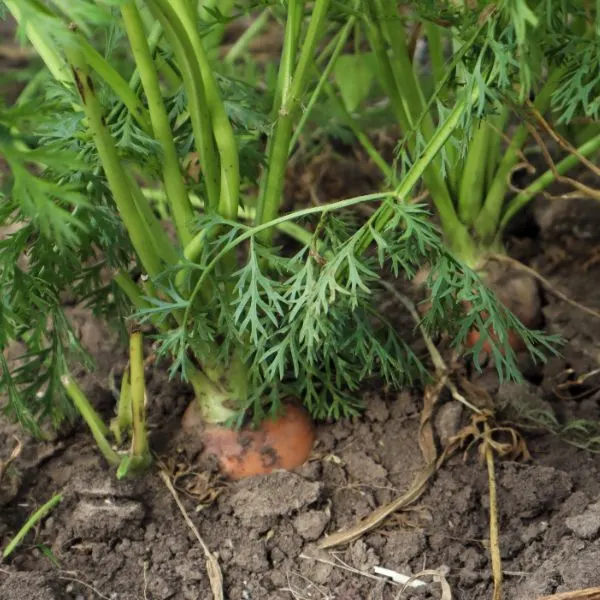
When planted around legumes, like bush beans, carrots benefit a lot from the nitrogen-fixing that enriches the soil. After all, these vegetables require rich and healthy soil to grow well and enjoy a higher yield.
13. Rhubarb

Rhubarb offers impressive pest control benefits when planted near bush beans. They are particularly effective at protecting the legumes against black flies.
14. Celery
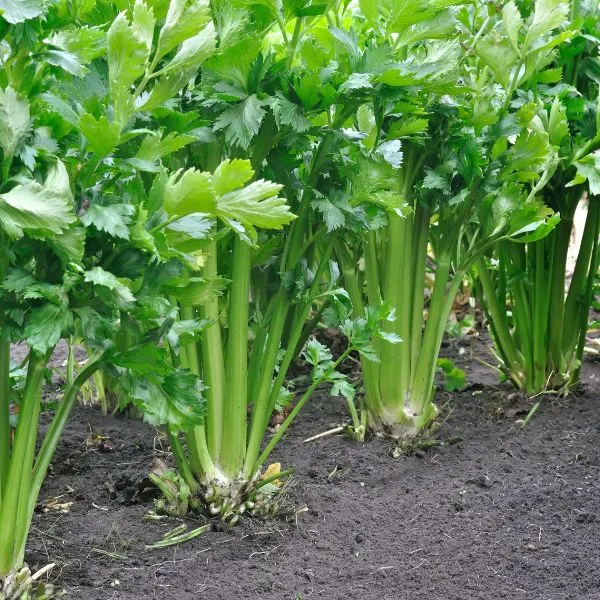
Celery and bush beans complement each other’s growth and happily coexist next to each other. Celery does a good job at repelling bean beetles from both bush and pole beans. On the other hand, bush beans are great at soil fixing and enriching it to provide for the demanding heavy feeding of celery.
15. Cucumber
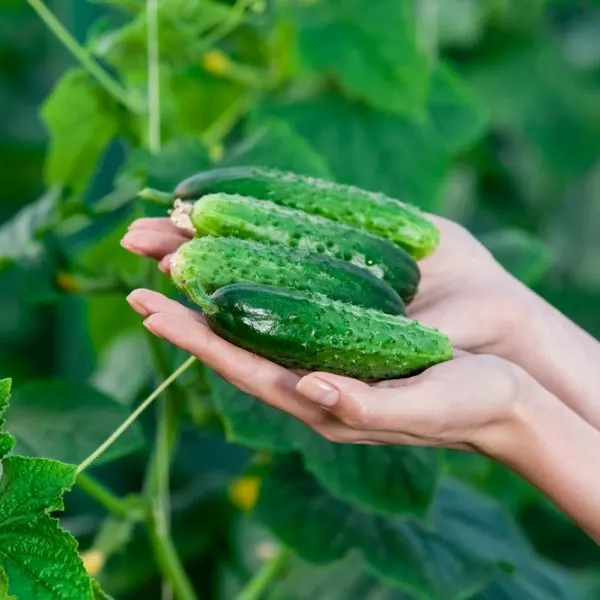
Cucumbers, eggplants, zucchini, and radish are also popular companion plants for bush beans as they encourage their growth. Cucumbers benefit from the nitrogen-fixing ability of the beans, enriching the soil with ample nutrients. On the other hand, cucumbers encourage the strong growth of the beans as they continue to benefit from them.
16. Eggplants
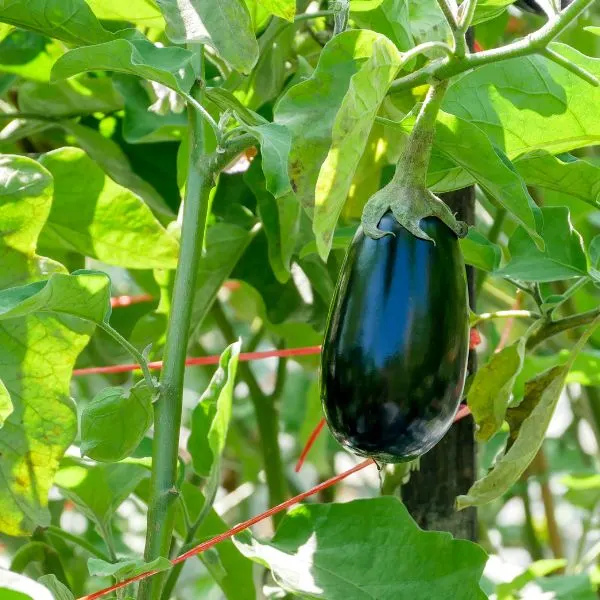
Like cucumbers, eggplants benefit from soil enrichment as a result of the nitrogen-fixing by beans. But, bush beans also help eggplants with pest control, particularly by repelling Colorado potato beetles.
17. Zucchini
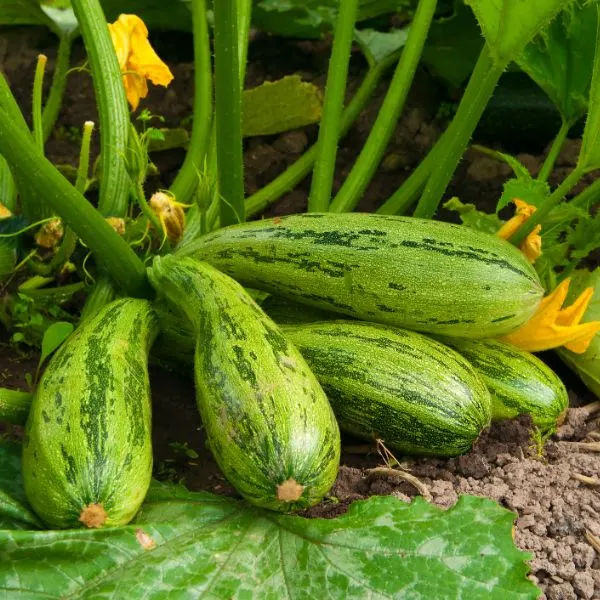
Zucchinis also benefit from bush beans as eggplants do. They enjoy soil enrichment which helps boost their fruit production. Further, bush beans repel garden beetles and similar pests that may attack zucchinis and other vining plants.
18. Radish

As they enjoy rich nutrients promoted by nitrogen-fixing, radishes boost healthy bean growth.
Brassicas
19. Brussel Sprouts
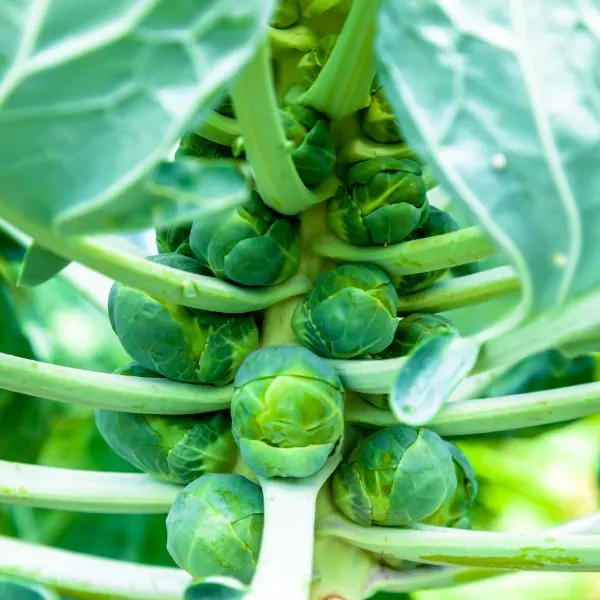
Brassicas are another popular vegetable group to grow well with bush beans. But, not all Brassicas will grow harmoniously with these legumes. So, you have to exercise extra caution and ensure the vegetables you pick are compatible. Brussels sprouts are several of the Brassicas that pair well with bush beans. Brussels sprouts benefit from nitrogen-fixing which gives them a hefty nutrient supply.
20. Cabbage
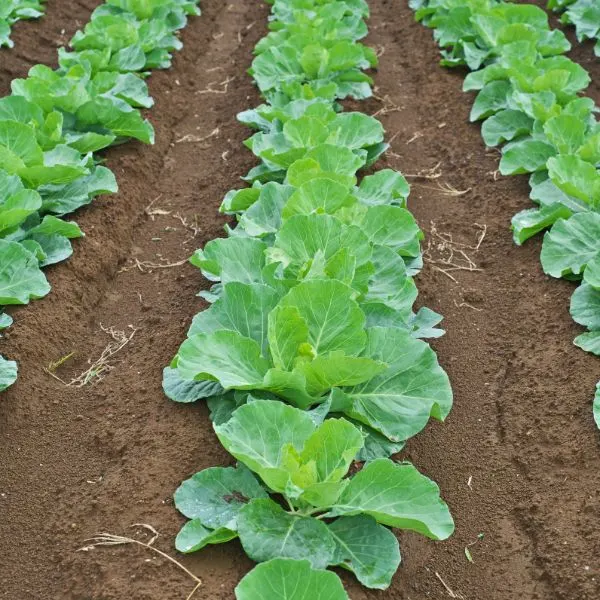
To produce its lush leafy greens, cabbage requires a significant supply of nutrients. Planting them near bush beans and peas helps to supplement this need. The legumes do a good job at nitrogen-fixing to help enrich the soil and provide the much-needed nutrients for these heavy feeders.
21. Lettuce
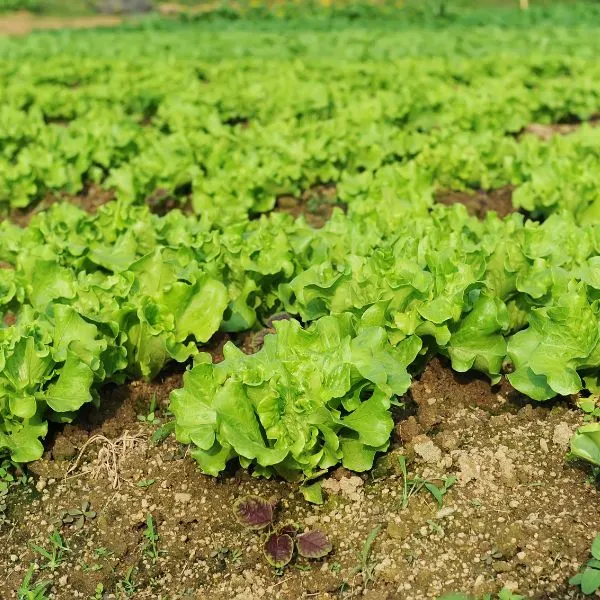
The relationship between bush beans and lettuce isn’t like the rest of the Brassicas. Growing bush beans with lettuce brings completely different benefits for the leafy greens. Generally, lettuce thrives in cool weather. When put in warm weather, the leafy greens don’t amass as much growth, turning out really small.
Further, warm weather causes lettuce to bolt and develop an almost inedible bitterness. Bush beans grow in bushy plants that become taller than lettuce. The bushy plants come in handy in proofing the shade from the sun.
22. Spinach
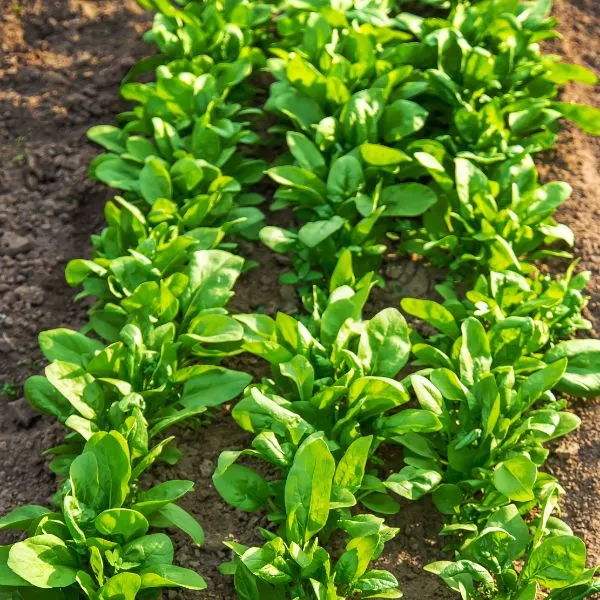
Similar to lettuce, delicate spinach plants enjoy comfortable shading and protection from the extreme summer sun when grown near bush beans. On the other hand, spinach does an incredible job of providing ground cover for the beans.
23. Cauliflower
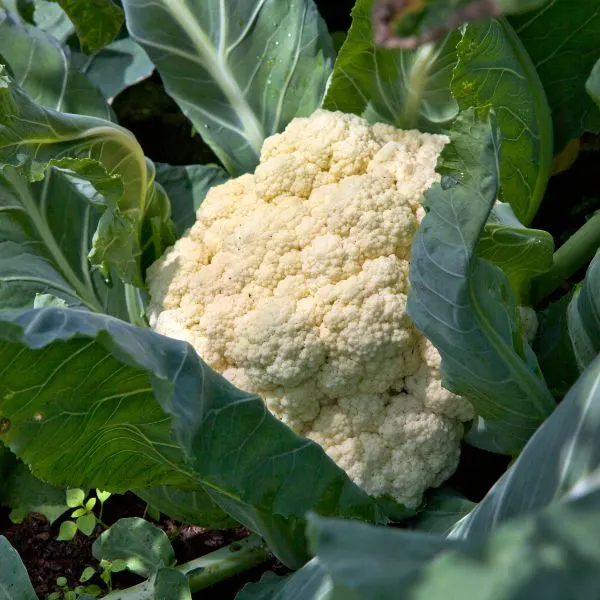
Bush beans and cauliflower complement each other in pest control. Each plant protects the other from pests while attracting beneficial insects to promote healthier growth.
24. Kale
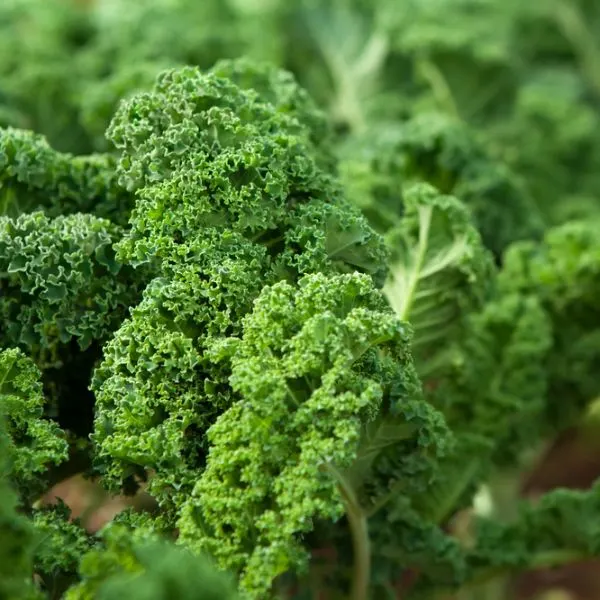
Like lettuce, kale enjoys shade from bush beans, protecting it from extreme sunlight and bolting. However, the leafy green is also a heavy nitrogen feeder. So, planting it near bush beans helps provide its much-needed nitrogen supply.
25. Swiss Chard
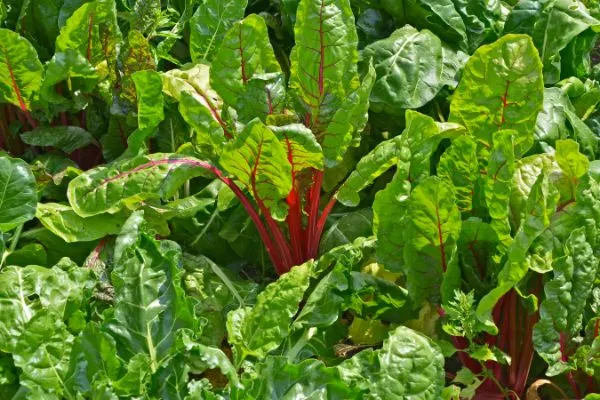
Being a heavy feeder like other leafy green Brassicas, Swiss chard benefits from the nitrogen-enriching bush beans.
26. Arugula
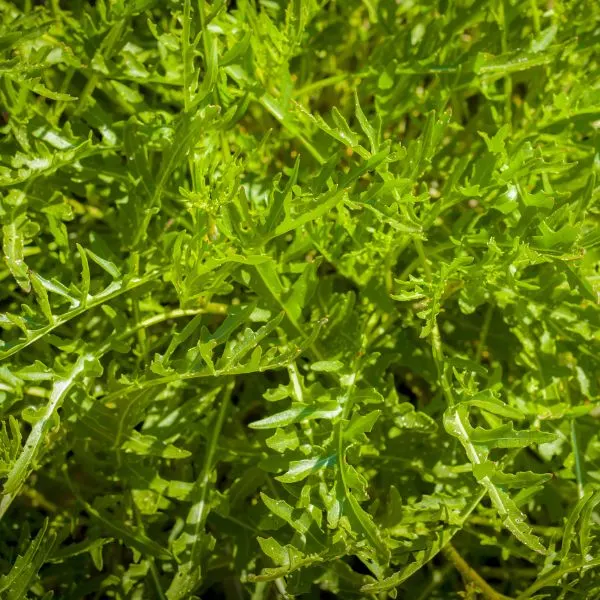
When planted near bush beans, arugula benefits the legumes with its pest control properties. Further, arugula does an excellent job of attracting beneficial insects while confusing bean-infesting pests. The cool weather-loving leafy greens also enjoy the cool shade from the bushy beans, protecting them against bolting.
Herbs
27. Cilantro
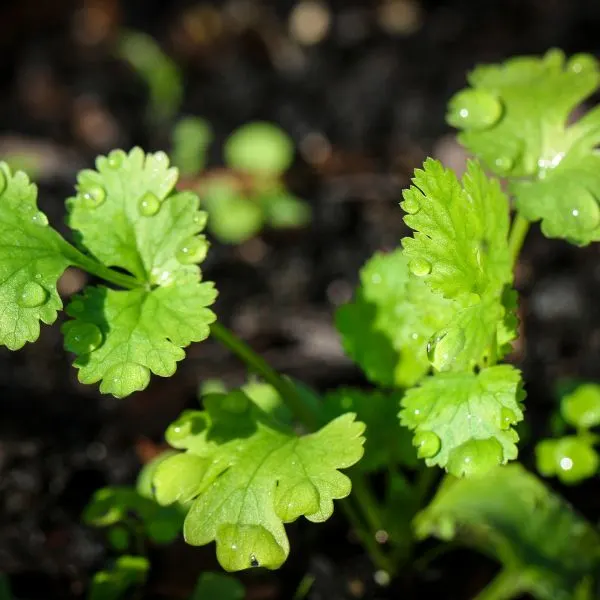
Several herbs grow incredibly well with bush beans as ground cover. Cilantro goes the extra mile to aid beans with pest control. These herbs help to attract beneficial insects while repelling unwanted pests.
28. Dill
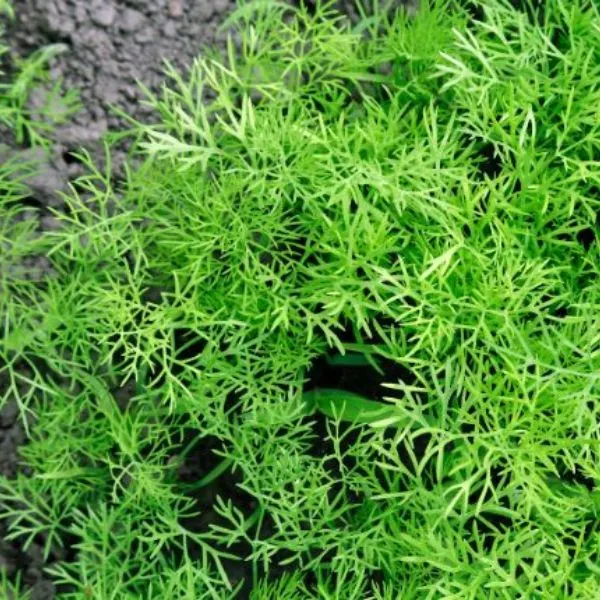
Like cilantro, dill does a great deal of pest control for bush beans. The herbs do an excellent job of repelling predatory pests, like wasps, aphids, Mexican bean beetles, and spider mites. The herb also attracts beneficial insects, such as hoverflies.
29. Rosemary
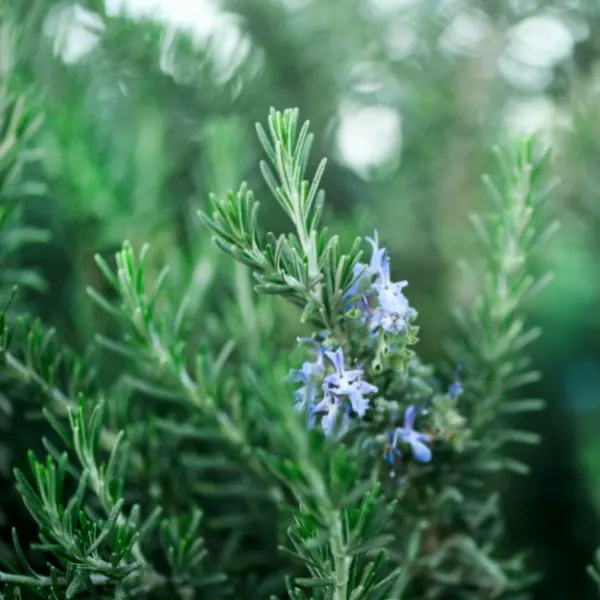
Rosemary boasts a strong fragrant aroma that comes with its benefits for companion plants. Rosemary uses its strong aroma to deter a wide range of pests, including Mexican bean beetles, carrot flies, and cabbage moths. While you want to plant rosemary close to the beans, don’t place it too close to block out sun exposure.
Instead, place it at the base of the beans, leaving some space in between. Alternatively, you can place potted rosemary near the base of the bean plant. This planting option also protects the more tender rosemary plants.
30. Sweet Basil
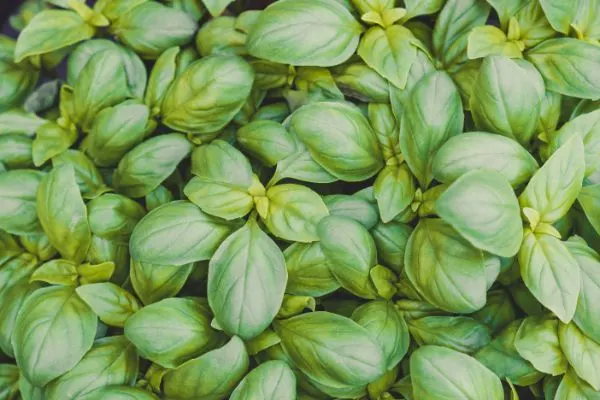
Basil protects bush beans from predatory pests, like Mexican bean beetles, and helps to boost the yield. To enjoy the most from this herb, pair it with bush beans and eggplants to boost their yield.
31. Oregano
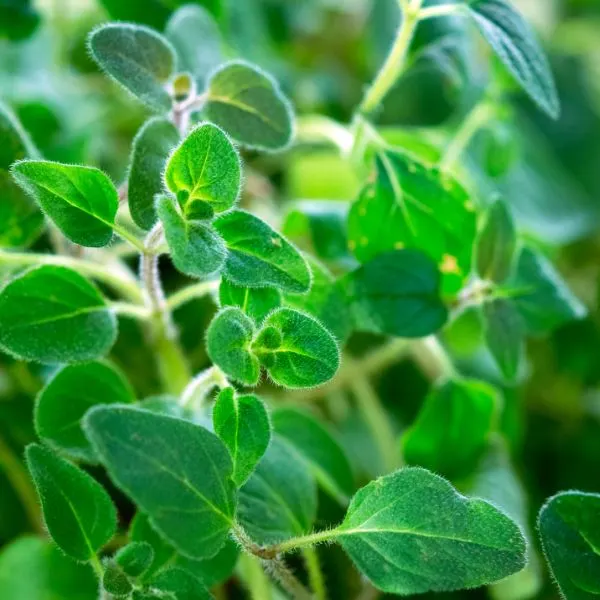
Like sweet basil, oregano offers incredible pest control properties and targets sap-sucking insects, such as aphids. In fact, its ability to fight off aphids makes it an excellent companion plant for many options. You can pair it with bush beans and other compatible plants, like eggplant, squash, cabbage, Brussels sprout, cauliflower, and strawberries. But, make sure the plants you choose are all compatible with one another.
32. Summer Savory

Like rosemary, summer savory does a good job of protecting bush beans from Mexican bean beetles. But, this is not all summer savory does for the legumes. The herb also promotes the overall growth of the bean plants, increases yield, and boosts the flavor of the beans.
Don’t grow summer savory too close to the bean plants. Instead, position it near the base of the plant, leaving some space enough that the beans don’t shade it.
33. Borage
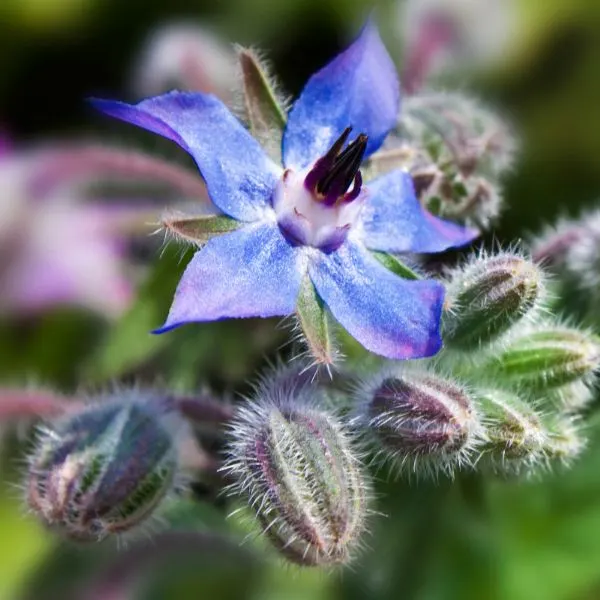
Borage grows very pretty flowers to complement any garden. These pretty flowers also do a great job of attracting a range of beneficial insects and pollinators. However, borage also does well for the beans, helping to deter many pests. The best part is you can enjoy this herb outside the garden in a range of recipes too.
34. Catnip
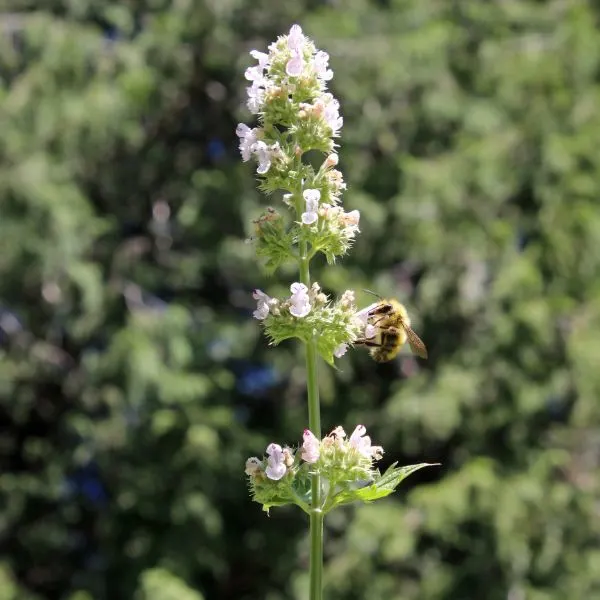
Similar to other companion herbs for bush beans, catnip boasts reasonable pest control properties. The herb is effective at repelling many pests found in vegetable crops, like beans. Common pests include flea beetles.
Fruits and Berries
35. Fruit Trees
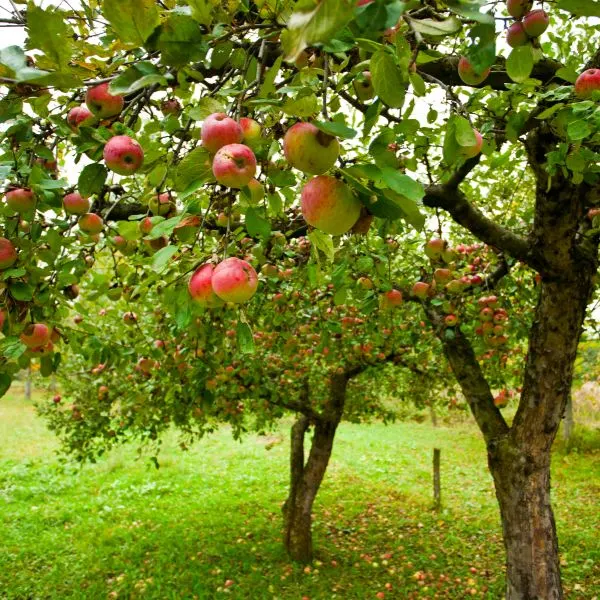
Extending its companion plant list, bush beans pair well with a good variety of fruits and berries. Most popularly, the legumes pair well with various fruit trees. These include peach, apricot, and nectarine fruit trees, to mention a few.
When planted at the base of the trees, bush beans allow the trees to enjoy their nitrogen-fixing abilities. With the enriched soil around, the trees can access their much-needed supply of nutrients to boost growth and fruit yield.
36. Strawberries

Strawberries and bush beans complement one another pretty well. When planted together, they both grow very quickly compared to if they grew alone. Bush beans also repel garden beetles that like to prey on strawberries. Additionally, the legumes boost nitrogen fixing in the soil to boost berry production.
Flowering Plants and Perennials
37. Nasturtiums
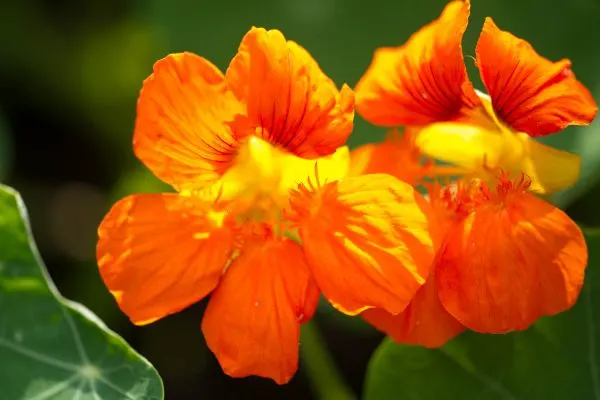
The beautiful nasturtiums flowering plants help deter bean beetle pests that like to prey on beans. The flowers also promote the overall growth and flavor of the beans. But, this is not all bush beans get from these flowers.
Nasturtiums also possess a spreading growth habit, allowing them to function as living mulch around the beans. The flowers can help prevent weed growth and soil erosion, keeping the beans stable and growing. These beautiful blossoms also attract beneficial pollinators.
38. Common Zinnia
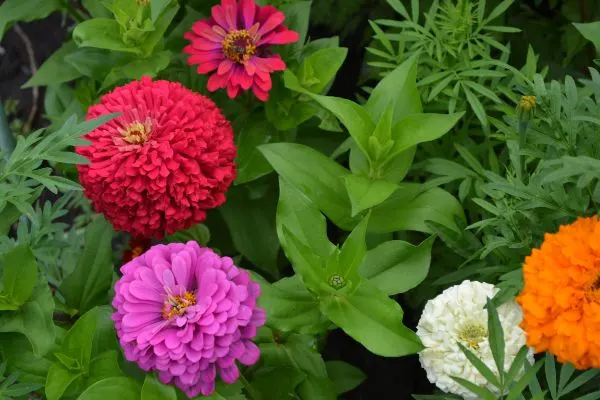
Common zinnia helps to promote the growth and increased yield of bush beans. In fact, this nectar-rich flower can even benefit bush beans and other bush bean companion plants if planted together. The flowering plants attract pollinators, such as bees to boost pollination in plants, such as beans and squash.
39. Petunias

The nectar-rich petunias attract beneficial insects while also repelling bush bean-infesting pests. These include garden pests such as Mexican bean beetles, aphids, tomato worms, leafhoppers, and asparagus beetles.
40. Chamomile

Chamomile also boasts pest-controlling properties, tackling hoverflies, wasps, and Mexican bean beetles. Like bush beans, chamomile also boasts soil fixing abilities. Chamomile also attracts multiple pollinators, including bees which help to pollinate bean and pea plants.
However, this flowering herb enriches the soil with minerals such as calcium, potassium, and sulfur. On the other hand, chamomile benefits from the nitrogen bush beans enriching the soil.
41. Marigolds
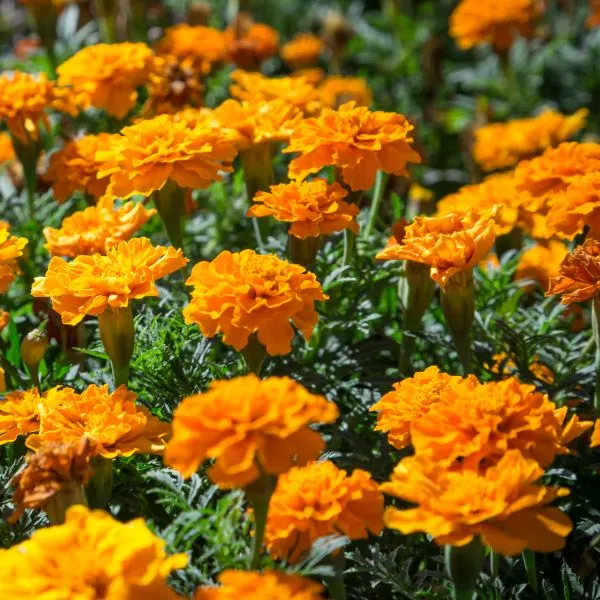
In addition to their beautiful blossoms adding interest to your garden, marigolds help to deter multiple pests. Marigolds are also natural insect repellents, protecting bush beans from Mexican bean beetles, in this case.
5 Worst Companion Plants for Bush Beans
Bush beans have an extensive list of plants they grow well with. But, this doesn’t mean they can grow well with just about any plant. There are 5 particular plants you want to keep away from bush beans for different reasons. Here are the 5 worst companion plants for bush beans and why they are so;
1. Alliums
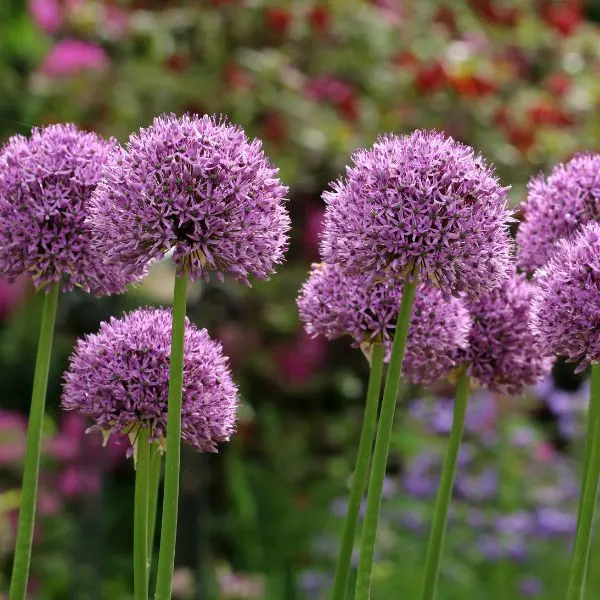
The alliums family consists of plants, such as garlic, onions, spring onions, chives, shallots, and leeks. Plants from this group unusually pack antibacterial properties that may affect the roots of certain plants, including beans. This, in turn, prevents beans from their nitrogen-fixing role.
2. Peppers
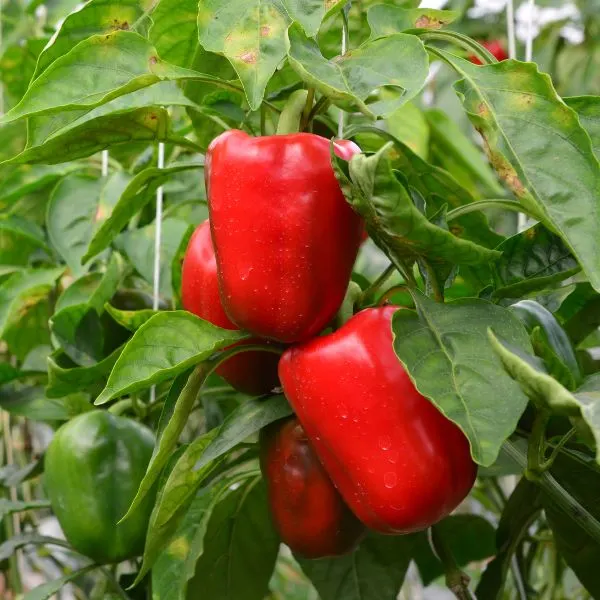
Nightshades like potatoes and tomatoes grow very well with bush beans. But, this is not the same for peppers. Some experts argue that bush beans can grow well with peppers but pole beans don’t. Others argue that both types of beans are not ideal for peppers.
Either way, the common reason why the two don’t grow well is that the bean vines spread fast and can aggressively choke out pepper plants. Yet, it’s only pole beans that grow in vine style while bush beans, like their name, suggest growing in small bushes. Either way, it’s better to be on the safe side and avoid pairing these plants together.
3. Sunflowers
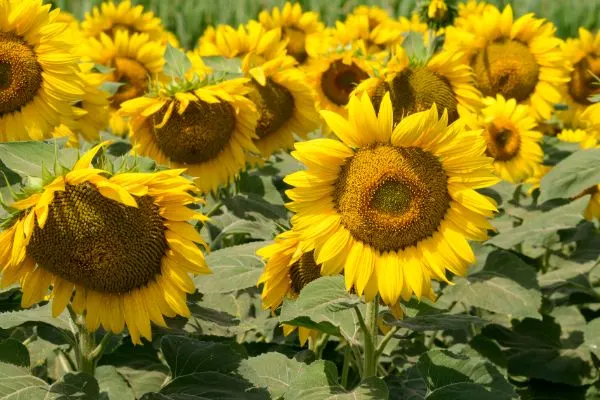
Sunflowers are another popular plant to keep away from bush and pole beans. However, their upright design resembles that of corn and offers potential support for pole beans. But, it’s not the physical structure that makes sunflowers dangerous to pair with any bean plant. Instead, sunflowers boast a chemical compound that inhibits the growth of beans.
4. Fennel
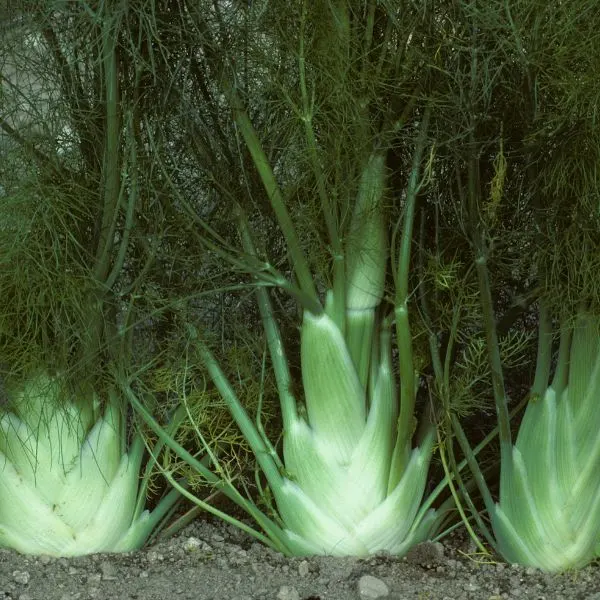
Fennel pairs well with a few plants. However, it also doesn’t grow well with an extensive list of plants for the same reason. Fennel releases a chemical compound that inhibits the growth of most plants, including bush beans.
5. Broccoli
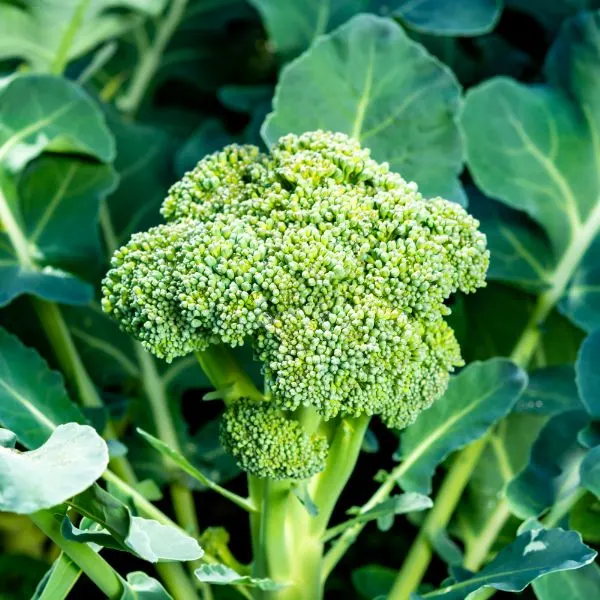
Brassicas are a popular companion plant group for bush beans. But, not all members of the Brassicas grow well with the legumes. Broccoli in particular is not a good companion plant for bush beans. Typically, broccoli and bush beans share similar nutrient needs for growth and survival.
So, planting the two plants together will result in them fighting over nutrients and affecting their growth and yield. Further, the broccoli cannot tolerate the nitrogen that beans release into the soil. Therefore, planting bush beans and broccoli is a definite no-no!
Other plants you want to avoid pairing with bush beans include sword lilies and Artemisia.
Frequently Asked Questions (FAQs)
Why Pair Bush Beans with Companion Plants?
Companion planting with bush beans comes with a wide range of benefits for both bush beans and plants that pair well with it. Benefits of bush bean companion planting include organic pest control (using zero chemicals or pesticides), attracting pollinators, providing shade, and sheltering some plants. Other benefits include space-saving, flavor enhancement of plants, and improvement of soil quality and fertility.
What Type Of Plants Should I Avoid Pairing with Bush Beans?
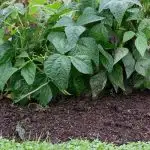
Avoid pairing bush beans with plants that can’t tolerate their growing environments, such as neutral to acidic well drained soils. You also want to avoid plants with similar nutrient needs to prevent nutrient competition and stunted growth for the plants. Further, avoid pairing bush beans with plants that have the same root depth to prevent completion for growing in the same depth.
How Long Do Bush Beans Grow?
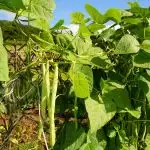
Bush beans take about 50 to 60 days to grow. These beans usually appear at the same time at once. In this case, you want to stagger the planting every two weeks to ensure a continual harvest.
Can I Plant Bush Beans with Fruits?

You can certainly plant bush beans with fruits. These legumes are compatible with a range of fruits including different fruit tree types, like apricots, and strawberries.
Can I Plant Bush Beans with Flowers?

You can definitely plant bush beans with flowers. You can find a long list of flowers that grow well with bush bean plants. Common flower options include marigolds, nasturtiums, common zinnias, and chamomile. However, never plant bush beans with sunflowers as they inhibit their growth.
Conclusion
With such a wide array of options to choose from for the best companion plants for bush beans, the final choice is up to you. These crop plants pair well with fellow crop plants, vegetables, herbs, fruits, and flowers.
So, you can integrate them into an edible vegetable garden, an ornamental floral haven, or even mix them up. With their soil-fixing ability, pairing beans with your garden plants will promote a healthier garden with a higher yield.
More companion plants
